By Magnus Salbu
Back in September of 2015, when the Jaeger-LeCoultre Geophysic True Second was first announced, I immediately knew I wanted one. The rough but still dressy look really spoke to me. Its history intrigued me and its unusual complication tipped me over the edge. Fast forward to November of 2016, the stars aligned and I was finally able to buy one. After having had it for a few weeks I thought I’d share my thoughts on this very unusual model from Jaeger-LeCoultre.
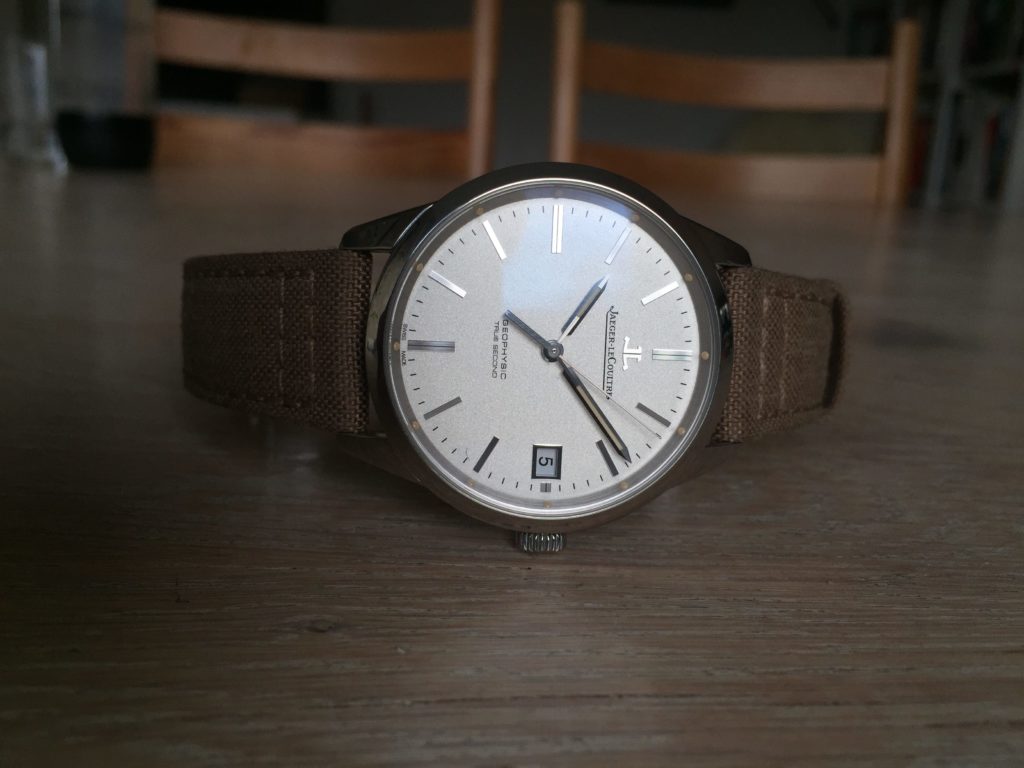
To fully understand this watch, you need to know the history behind the Jaeger-LeCoultre Geophysic model. The original Geophysic was created in 1958, during the first, and (so far) last International Geophysical Year. This watch was designed to accompany scientists and explorers who were tasked to find out more about our planet’s most inhospitable and unexplored places. The Geophysic was technically very advanced for its time, being chronometer certified and able to withstand up to 600 Gauss.
In 2014, JLC decided to release a tribute model to the original 1958, as they have done earlier with the Reverso 1931 and the tribute to Deepsea. The Geophysic 1958 as they called it was very well received by the both the general public and JLC aficionados such as myself.
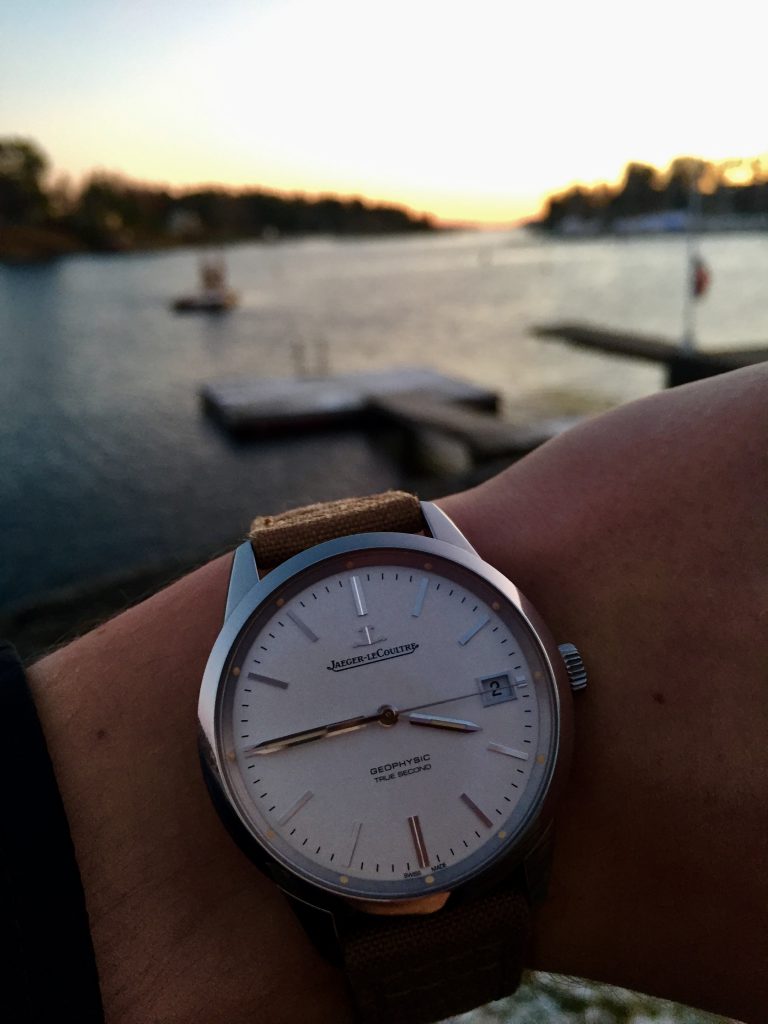
In the fall of 2015, JLC decided again to expand the Geophysic collection, this time with the Geophysic True Second and Geophysic Universal Time. This were completely different watches than the Geophysic 1958 that was released a year before. While the Gophysic 1958 was housing an already existing JLC calibre 898/1, a whole new movement was developed for the Geophysic True Second. This new movement is unlike anything JLC has ever made, and it features a complication said to be rarer than a Tourbillon. The deadbeat seconds hand, we will talk more about this later. It also has the relatively new Gyrolab balance. We first saw it in 2007, in JLC’s Extreme LAB. The Extreme LAB is a very interesting timepiece which was meant to demonstrate the latest technical innovation in watchmaking. Now you may ask: “what is the point of this fancy new balance?”. Well, the idea is that since it is not a complete ring like a regular balance it should encounter less air resistance, thus making the balance more effective. 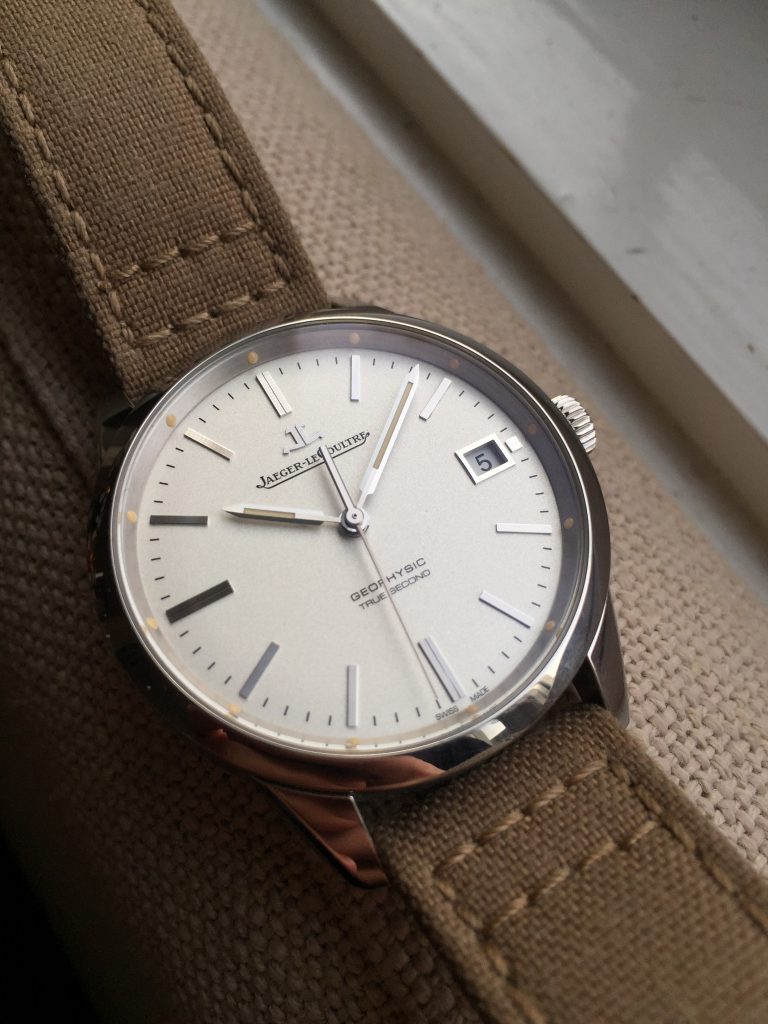
Now let’s talk a bit about this rare complication I mentioned earlier. The first thing you will notice when seeing this watch live is that the seconds hand does not sweep like a normal, mechanical, wristwatch. Instead, it ticks, just like a quartz. You may think this is the work of the devil, making a high-end mechanical watch look like a quartz watch. But it is, in fact, the work of the deadbeat seconds complication. Now as you can imagine, the deadbeat seconds complication has historically been a very unpopular complication. Many have tried, but most have failed to make a successful one. One you may not have heard of comes in the form of the “Rolex Tru-Beat” in the 1960s. Legend has it, it was so unpopular that when one came in for a service, Rolex would switch out the deadbeat escapement for a regular escapement, making this watch a rarity today.
In the 1950s and 60s, this complication was advertised as a nurse’s instrument for more accurate reading of the time. This meant that the nurse could determine a patient’s pulse more easily.
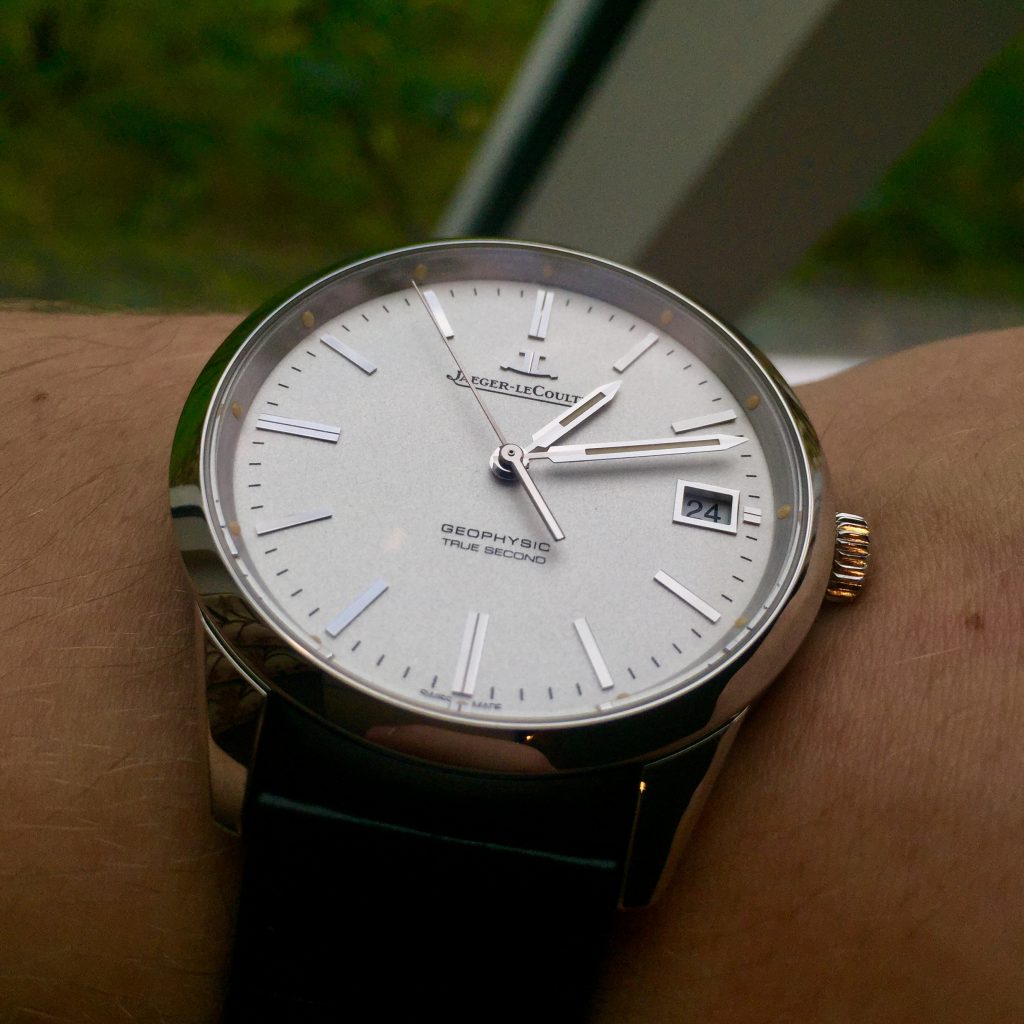
The mechanics behind this deadbeat seconds hand are rather complicated, I’m no watchmaker, but I’ll try to explain the mechanics as simply as possible. The mainspring powers the escapement as well as a secondary spring, this secondary spring is attached to the star wheel on the same arbor as the escape wheel and a blade just above the centre of the rotor. It’s that spring which powers the escapement. The secondary unleashes a burst of power every second, making the seconds hand jump in the fashion characteristic of a quartz watch.
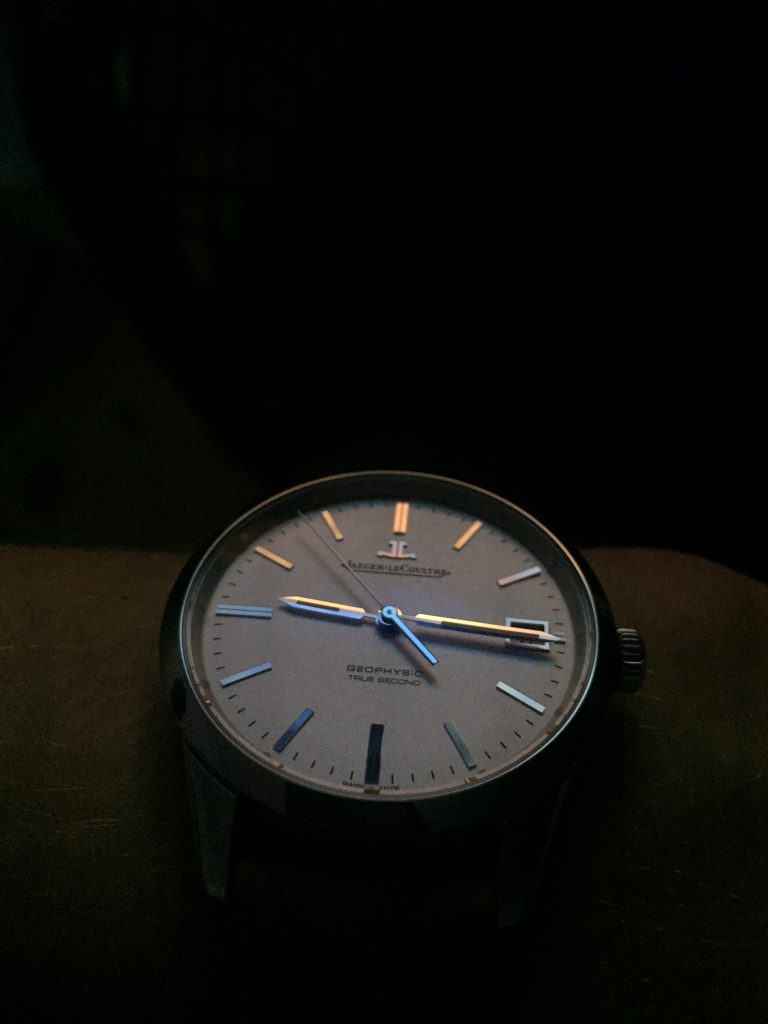
The dial is obviously vintage inspired with its cream coloured lume on both the hands and the chapter ring, yes you read that right, the lume dots are not placed on the dial as you will see in most watches. They are placed on the chapter ring between the dial and the crystal. This makes for a cleaner dial, but I have noticed the lume dots on the chapter ring do not receive light as well as the hands. Usually the hands glow brighter than the lume dots on the chapter ring.
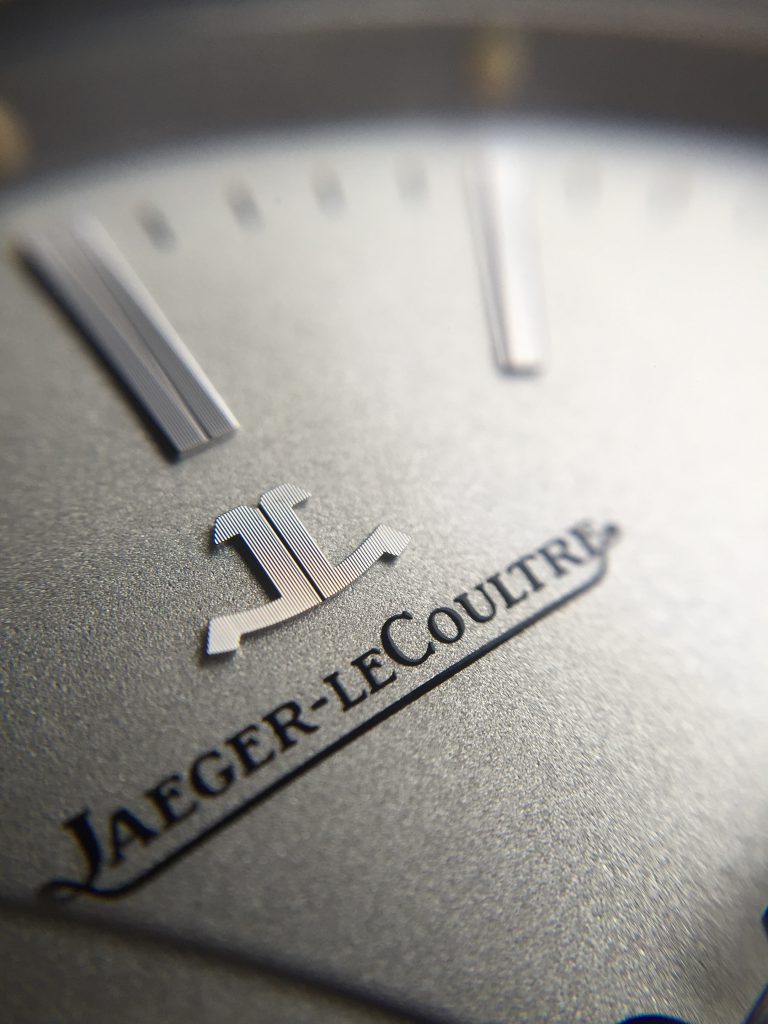
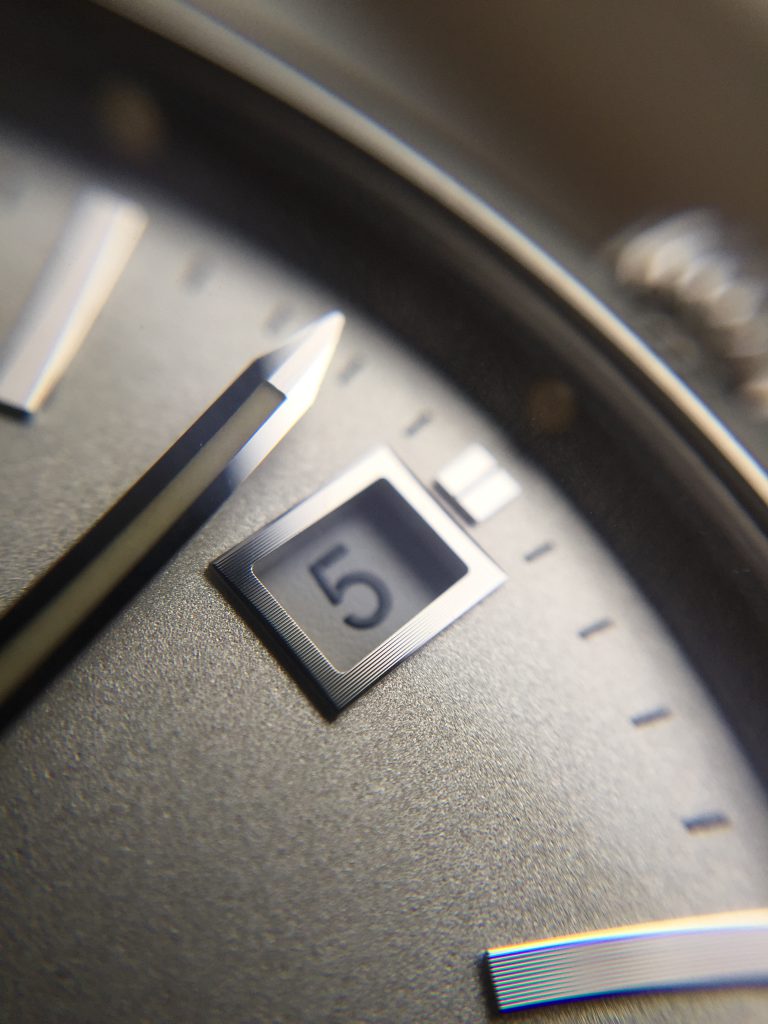
Contrary to what one might expect, the indices, JLC logo and date window frame on the dial are not mirror polished, they are rifled, you can’t see it very well by eye alone but you will notice they do not reflect light too well. The dial itself is also special. While it may look like a flat white dial in the pictures, you will notice upon closer inspection that it is, in fact, a textured dial. It almost looks like snow, a light version of Grand Seiko’s snowflake dial.
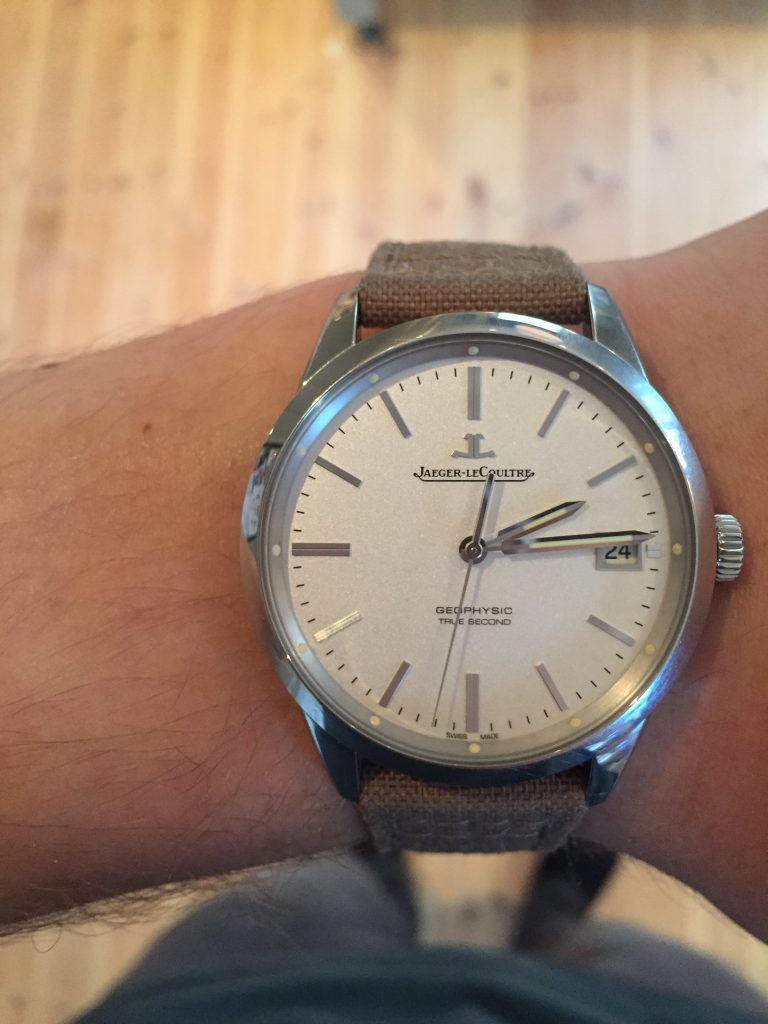
The overall case and dial design on this watch is very interesting, this is obviously no sports watch, but it’s definitely not a dress watch either. JLC made sure of this when they added the rather rough hands and textured details on the dial mentioned earlier. If this would’ve had dauphine hands and polished markers like traditional non-sports JLC watches very often have it would’ve been too dressy. Remember this is supposed to be based on the original Geophysic which was not a dress watch at all. JLC have mastered this fine balance between sports and dress very well. If I were to put this into a category, I’d say it’s a very no-nonsense watch designed for both high precision time keeping as well as accurate and easy reading of the time. I’d say it’s a watch in its purest form. And with the rather large, typical JLC-style, sloped bezel, it can fit snugly under a shirt cuff as well.
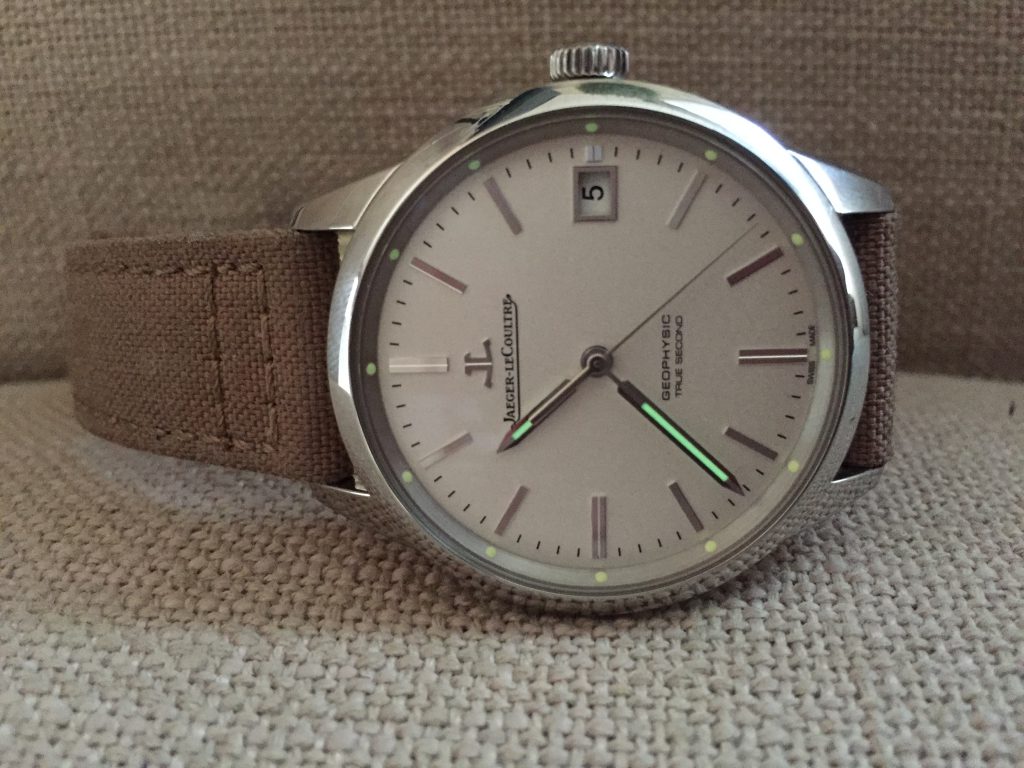
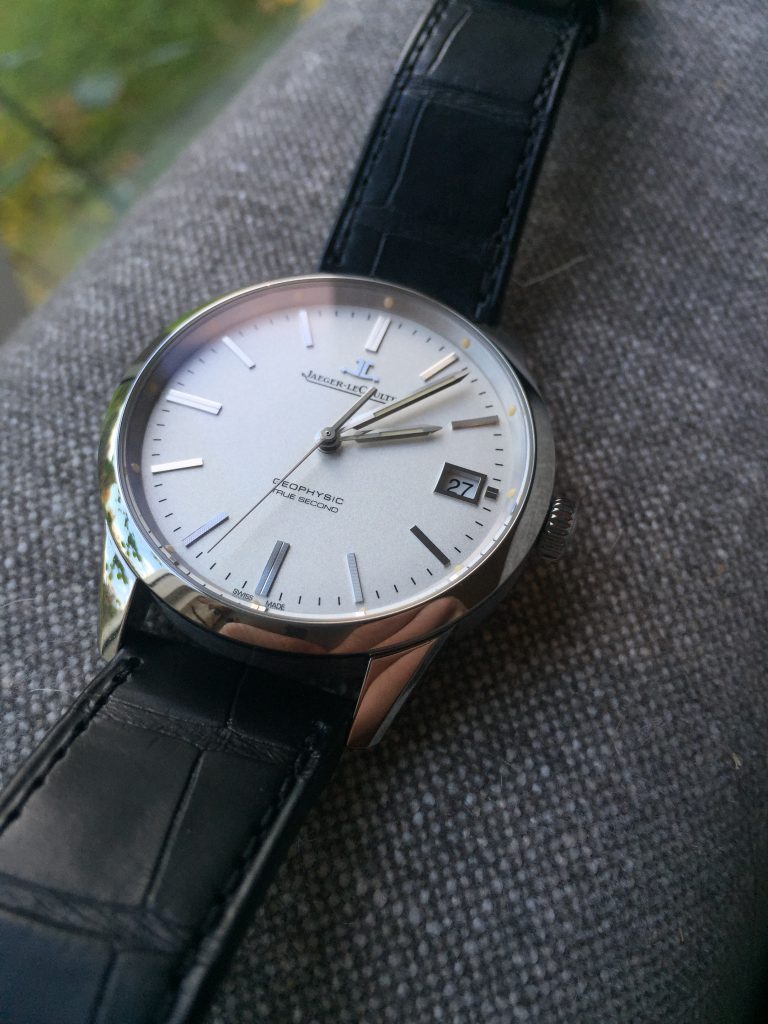
The case finish is as you’d expect from a company such as JLC, very good and cleverly thought out. The whole side of the case is brushed stainless steel, while the lugs and bezel are polished. Again JLC shows us that they were not trying to make a dress watch. The case diameter is 39.6 mm, a very age-appropriate size. The original Geophysic was a perfect size for its time and so is this one.
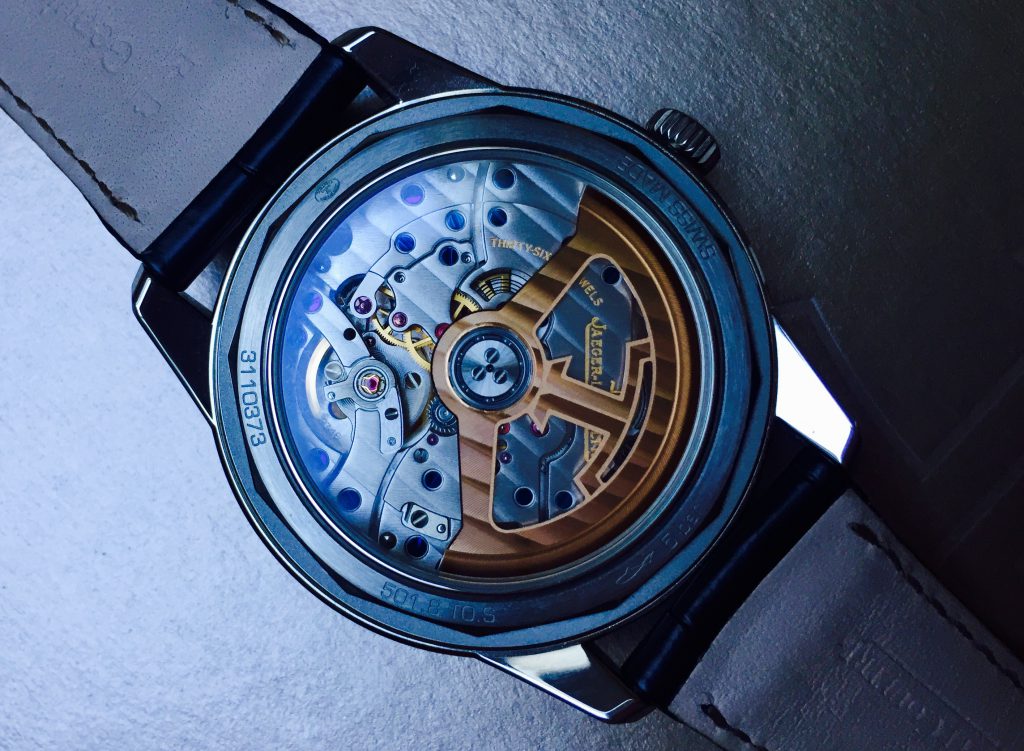
Now let’s talk I bit more about the movement, my favourite part of this watch. The calibre 770 movement ha more than just a rare complication. It has undergone JLC’s very own ‘1000 hours control’ and in the few weeks I’ve had it I honestly haven’t noticed any deviation from the first time I set the watch and put it on my arm. The date on this watch is not a quickset, but before you completely rule out this watch as a future purchase, let me tell you about another very useful feature of this movement. The hour hand can be set independently to the rest of the hands, even without hacking the movement, if you are familiar with Omega’s Co-Axial 8500 you’re in familiar territory with this one. This makes for very fast changing of the date, even with the lack of a quickset function. It’s also very practical when changing time zones, instead of turning the crown 15 times just to get to the right time zone and then having to set the time again, you just pull out the crown one notch and turn it a quarter of a turn backwards or forwards depending on where you’re going.
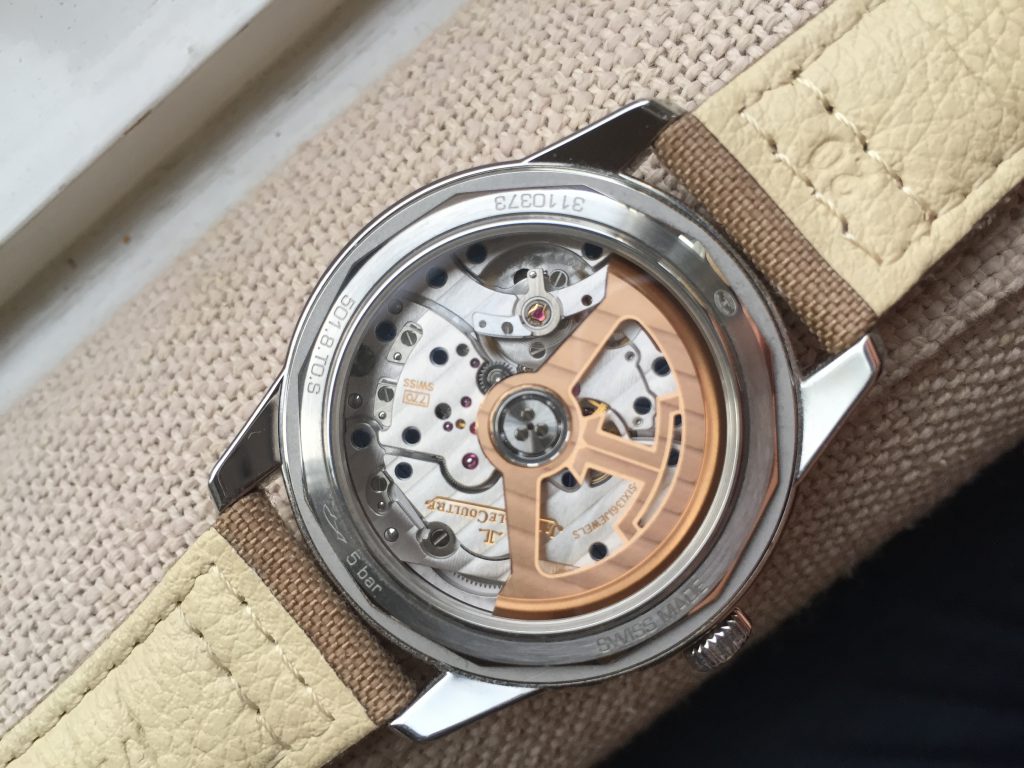
This movement is more than just advanced mechanics and smart solutions; it is also well decorated. The caliber 770 is arguably the nicest looking movement under $10.000 that JLC has ever made. It is not in the same style as the rest of the Master collection movements are. The iconic, circular Côtes de Genève finishing has been replaced with a regular Côte de Genève on the bridges and rotor. Now the rotor itself has also been replaced. It is now 22 carat gold rotor with a beautiful JLC logo cut out in it. The first thing I noticed when I saw this movement live was that it’s very deep. The deadbeat seconds complication adds quite a bit of height to it. It has a unidirectional winding rotor with ceramic ball bearings which makes quite a bit of noise as it spins, sadly. The movement has got heat blued screws and wonderfully bevelled edges. It really is a sight to behold for anyone even remotely interested in the mechanics and aesthetics of a movement.
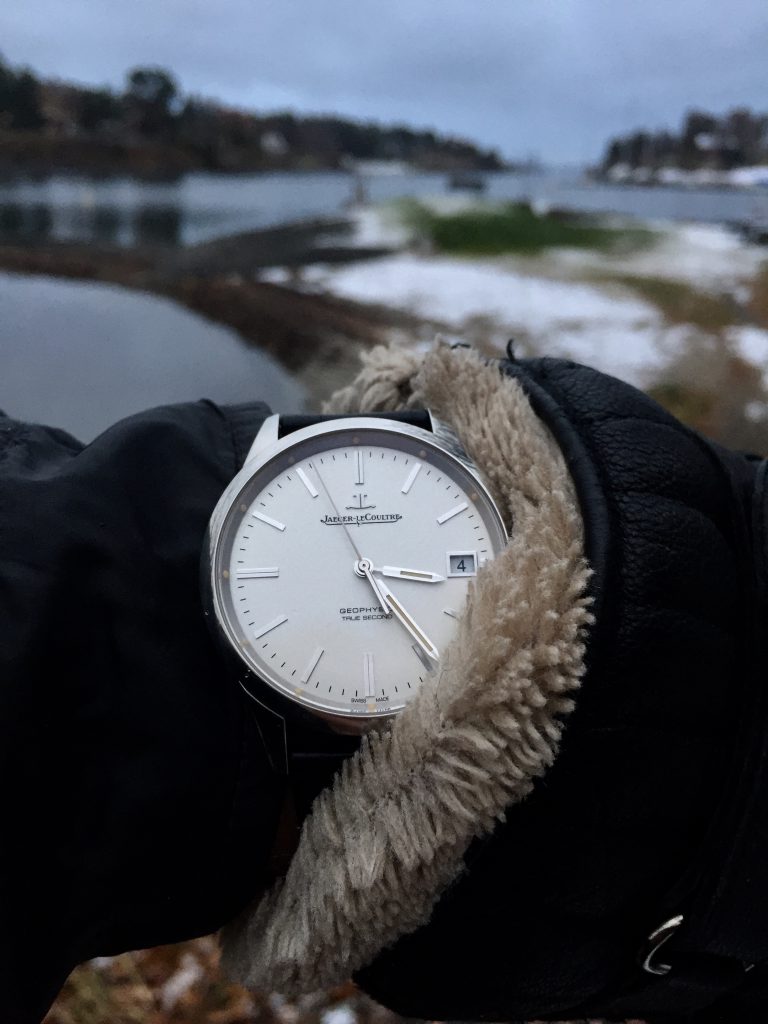
In conclusion, just like the Geophysic 1958, I think Jaeger-LeCoultre has hit a home run with this modern interpretation of the original Geophysic. With the new movement, new design and rather a rough look, this is probably one of the best JLC watches under $10.000. If you can get past the fact that even to a lot of watch enthusiasts, this watch looks like a well-made quartz, at first sight, it really is a true, modern classic. For more info, please visit jaeger-lecoultre.com



